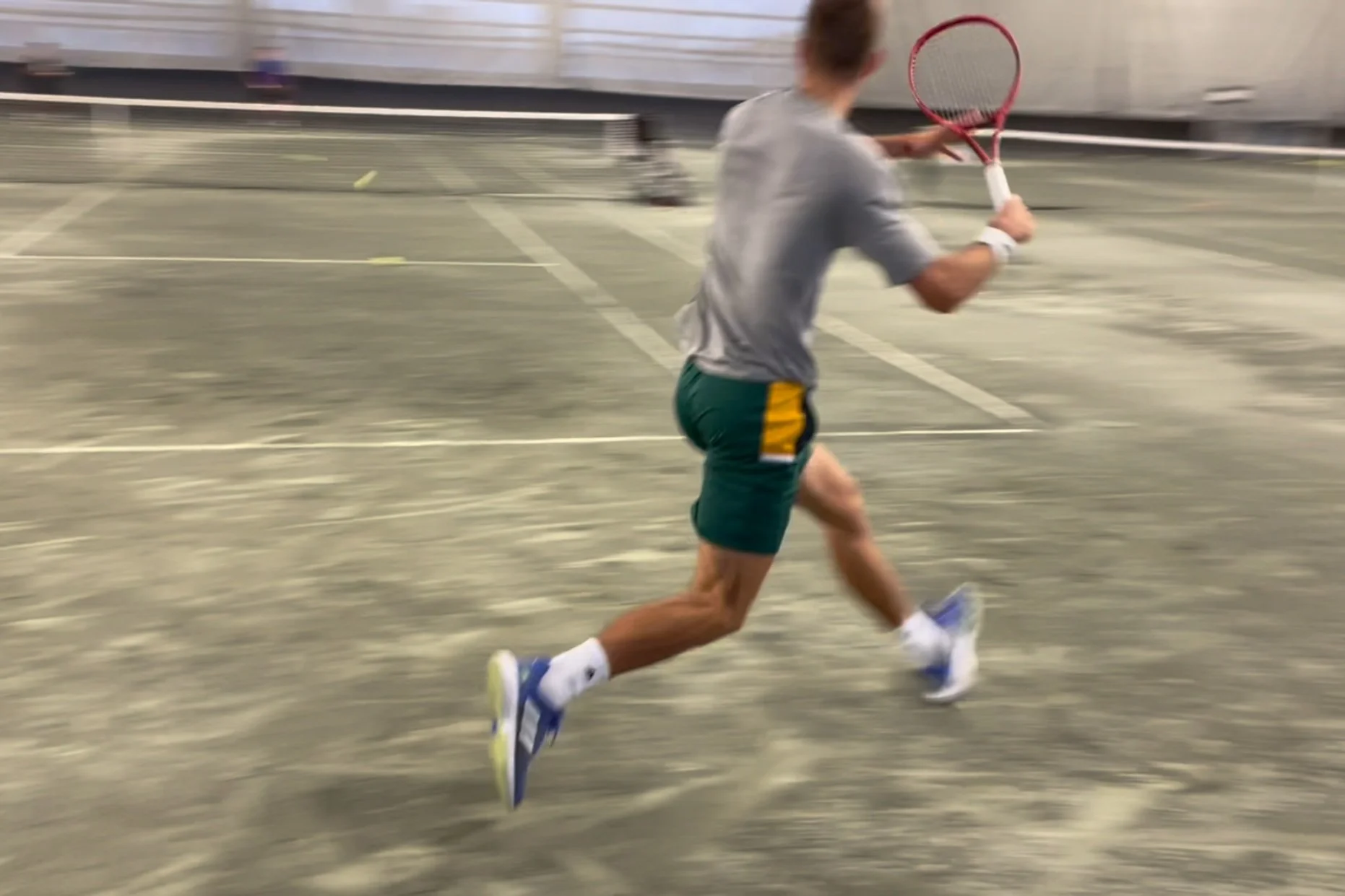We all use jumping in our training programs. But not all types of jumps are plyometric (and when it comes to improvements in elasticity & reactiveness, those details matter).
In this pilot episode, PhD candidate in plyometrics - Matt McInnes Watson - dives into what plyos are and what they aren't.
I’ve previously written about the split step and it’s importance to successful movement - and ultimately, shot execution - in tennis. But do we truly understand what factors contribute to an effective split step? Why we should devote serious attention to it? Or even more, how to best train it?
Before we get into the details, you should know that there are 3 primary components that make up the split step:
Have you ever been working on a player's forehand and thought "they're just not getting it". And instead of talking the player's ear off with detailed mechanics or trying every cue in the book, you decide to get them to throw a med ball.
All of a sudden, after just 1 or 2 cues - something like “thrust your rear hip” or “turn your torso, then release the ball” - they found the correct movement. You then return to hitting forehands and voila, they finally ‘get it’.
I’ve been asked countless times - from tennis coaches to players and even parents - 'how can I get more leg drive on my forehand?' 'Or more jump from the legs on my serve?' 'Or more explosiveness when moving laterally?' There’s no simple answer. It truly depends on a number of factors, including your strength levels, coordination, training age, biological age, training history, genetics and more. But if I absolutely had to boil my answer down to one form of training, I’d have to look towards plyometrics.
There are many terms to describe plyometrics including plyometric training, plyos, jump training, shock training (that’s what Soviets used to call it) & ballistic training. I may use some of these terms interchangeably throughout this article but they all refer to plyometrics. Whatever you call it, it’s general premise is to increase power output.
In previous posts on COD, we spoke about the importance of reactive strength. In particular, we emphasized the role leg and ankle stiffness plays in the production of reactiveness. Ultimately, high levels of reactiveness are predicated by very fast eccentric-concentric muscle actions. These actions impact a variety of movements in tennis, including any type of first-step reaction that involves very little changes in knee, hip and ankle amplitudes. `
But what about movements that have longer ground contact times? For instance, a player is forced into a deep lunge position - perhaps because of a fast low ball or because they’re retrieving a low volley at net. To recover from these types of scenarios requires qualities that extend beyond reactiveness. This is where strength and power qualities come into play. While reactiveness is great when joint angles are small, inertia is low and ground contacts are short, when these parameters are reversed, fast stretch shortening cycle (SSC) abilities won’t cut it.
Last week we introduced reactive strength and its underpinning qualities. If you haven’t read that post, I strongly encourage you to do so, as it’ll provide a scientific rationale for what’s to come in this article.
Recall that reactive strength is effectively the fast component of the stretch-shortening cycle (SSC) - SSC activity being a rapid change from an eccentric to a concentric contraction that produces more power than would be possible with a concentric only contraction. We also determined that reactive strength is quite important as it relates to change of direction (COD) in tennis. There are 2 reasons for this. First, it’ll improve a player’s split-step ability - effectively allowing for a faster first step initiation - AND it can help with movements - along with recoveries - that are short but require high levels of explosiveness (think of shots that are near you but are coming at you with speed).
The ability to respond quickly and efficiently to an oncoming shot, is perhaps one of the most important qualities a tennis player must possess. This ability is predicated on a number of factors including anticipatory skills, perception skills - picking up cues from the other side of the net, judging the ball appropriately etc. - along with physical qualities, one of them being reactiveness. Further to that, it helps when a player has tremendous change of direction (COD) abilities. Why? Because the player that can recover more efficiently after their previous shot, has a better chance to not only better 'see' the next shot, but also has the ability to respond to that shot with less ‘emergency’ - a term many coaches use.
How do different athletic qualities fit into the program of a tennis player? This is a complex question but one that deserves an answer. With information being so readily accessible these days, there are countless videos of players doing all kinds of things off the tennis court. But let me ask you this: just because a top 100 or 50 player is doing X or Y, does it mean it’s effective? Is it driven by some underlying scientific basis? Often times, it’s not. It’s a regurgitation of someone else’s training or a drill that was once seen before. If you’re a player, and someone is telling you to do squats on a stability ball…or ladder drills to develop agility and change-of-direction (COD) ability...seek alternatives as these are merely gimmicks that have little transfer to the aforementioned performance qualities.


![Plyometric Training: What It Is and What It Isn't w/ Matt McInnes Watson [Podcast]](https://images.squarespace-cdn.com/content/v1/542e007be4b08e60716458a7/1633032144170-UW5QAV449DF9W0I9RNNQ/mmw1.png)






